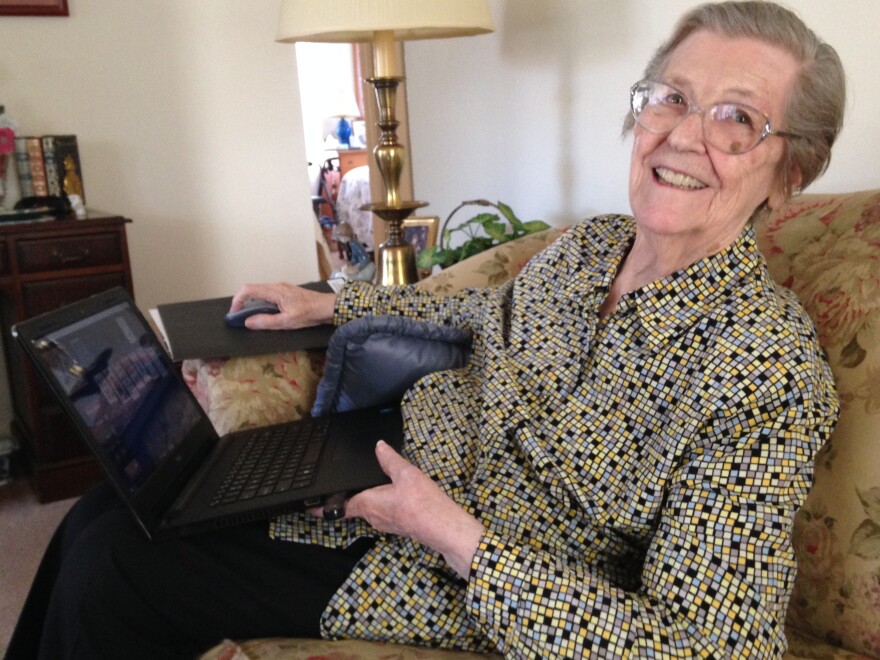This year, Hollywood honored women who played a key role in the U.S. space program. Their story was told in a film nominated for an Oscar. Even before the space age, it turns out women in Virginia played an important part in exploring the galaxy. They did research at the University of Virginia’s observatory, high on a hill known as Mt. Jefferson.
The McCormick Observatory was built in the 1880’s, and not much has changed inside the old brick structure with wooden floors and cabinets. Its large dome, for example, is still opened with the help of a rope. (We were alarmed when, in the course of a demonstration by observatory staffer Ricky Patterson, the old rope broke, but he assured us a member of the maintenance team could fix it.)
Patterson has studied the observatory's history. Beginning in 1912, he says, astronomers here were doing important work – calculating the distance of stars.
“We had to take hundreds of photographs of each star over years and then measure them very carefully through microscopes.”
Today, the observatory stores about 144,000 images on photographic plates that document a part of our galaxy’s past.
“There are one-off events, stars exploding," Patterson explains. " Stars in certain parts of their lifetime become somewhat unstable and swell up and get smaller, and that actually makes them look brighter and fainter. You know having data from back then could conceivable be useful, and other observatories are currently making use of that. Harvard spent over a million dollars to digitize their photographic plates.”
And there are books filled with calculations made by staffers referred to as human computers. Ricky Patterson found their names and began searching local telephone books where he found 93-year-old Caroyl Gooch.

“I’ve always thought math was the one thing you could depend on," she says with a smile. "No matter how many times you do it, two and two are always going to make four.”
Gooch began work at the observatory in 1942. She had a high school degree but couldn’t enroll in the University of Virginia which was off limits to women until the late 60’s. Still, Gooch learned a lot about astronomy from some of the top people in the field.
“It was exciting to think we would be doing something as important to the world as studying the stars,” she recalls.
Her boss, Dr. Samuel Mitchell, was impressed with her abilities and learned not to question her calculations.

“I plotted one star, and measured it any number of times and came out with a blip on one corner," Gooch says. "It wasn’t a natural orbit. Of course Dr. Mitchell was sure I was making a mistake somewhere, so we both sat down and plotted it and got the same results, and they realized that there was another body that was pulling this larger star out of its natural orbit. That was my only claim to fame in the four years I worked there.”
At first Gooch admits she had some doubts about the job and a particular colleague named Oscar who lived under her desk.
“It was a black snake that lived at the observatory to control the mice, and he for some reason or other took a liking to my feet. He’d be curled up under my desk. For the first few weeks I thought, “I can’t do this. This is ridiculous, but then we made friends.”
Gooch eventually left the observatory for a career in accounting. She hasn’t seen the film Hidden Figures, and her story might not be Hollywood material, but she has fond memories of her time in astronomy, measuring the real stars.

